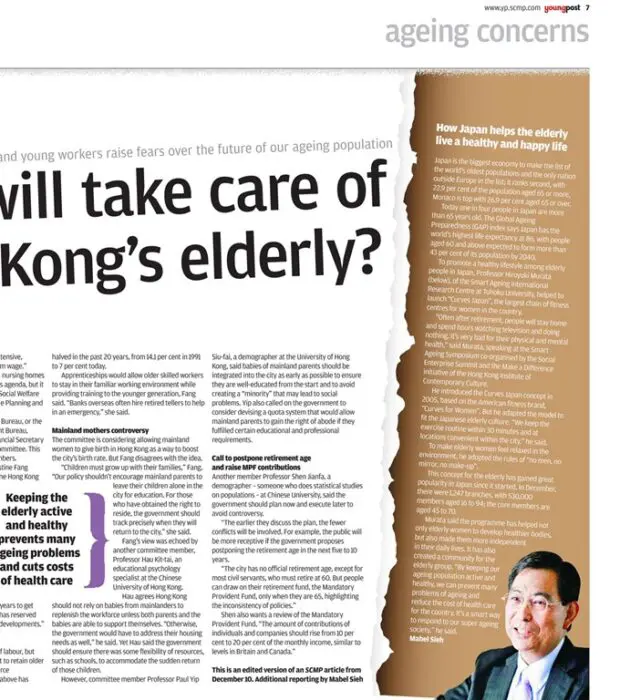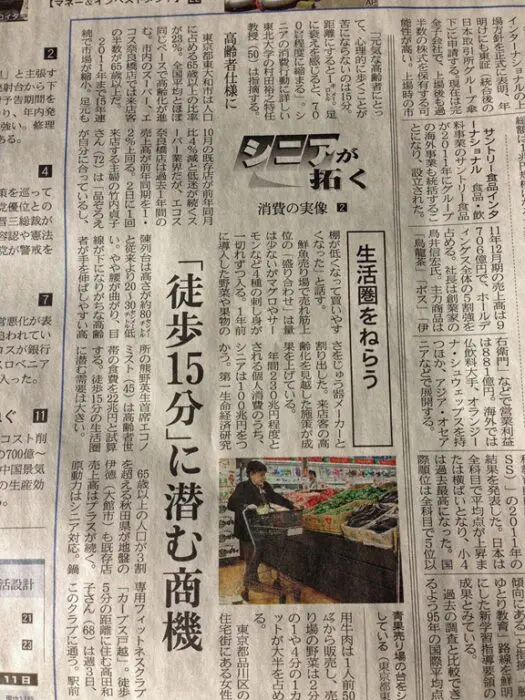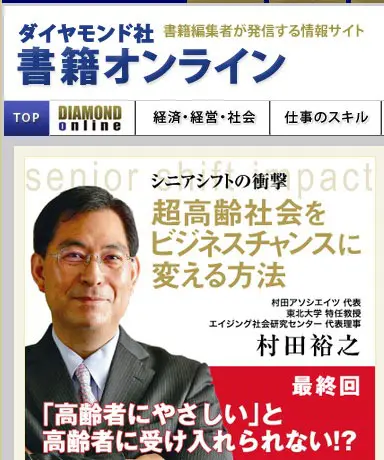2012年12月13日 South China Morning Post
日本より出生率の低い香港も「人口動態のシニアシフト」が確実に進んでいる
香港の英字紙、South China Morning Postの特集記事「Who will take care of Hong Kong’s elderly?(誰が香港の高齢者の面倒を見るのか?)」に12月1日開催のSocial Enterprise Summit2012でのインタビューをもとにした記事が掲載されました。
記事中に引用されている数値に若干の違いありますが、近い将来の香港における高齢化問題に対する危機感が表れている記事です。日本よりも出生率の低い香港でも「人口動態のシニアシフト」が確実に進んでおり、これから高齢化が加速することが予想されています。
高齢化で先頭を行く日本の対応から学びたいという姿勢はここ数年アジアの多くの国で感じます。「企業活動のシニアシフト」を進めることで、日本はアジアのみならず、世界各国に対してビジネスを通じて貢献することができる可能性が大きいのです。
Who will take care of Hong Kong’s elderly?
Japan is the biggest economy to make the list of the world’s oldest populations and the only nation outside Europe in the list; it ranks second, with 22.9 per cent of the population aged 65 or more, Monaco is top with 26.9 per cent aged 65 or over.
Today one in four people in Japan are more than 65 years old. The Global Ageing Preparedness (GAP) index says Japan has the world’s highest life expectancy at 86, with people aged 60 and above expected to form more than 43 per cent of its population by 2040.
To promote a healthy lifestyle among elderly people in Japan, Professor Hiroyuki Murata (below), of the Smart Ageing International Research Centre at Tohoku University, helped to launch “Curves Japan”, the largest chain of fitness centres for women in the country.
“Often after retirement, people will stay home and spend hours watching television and doing nothing. It’s very bad for their physical and mental health,” said Murata, speaking at the Smart Ageing Symposium co-organised by the Social Enterprise Summit and the Make a Difference initiative of the Hong Kong Institute of Contemporary Culture.
He introduced the Curves Japan concept in 2005, based on the American fitness brand,“Curves for Women”. But he adapted the model to fit the Japanese elderly culture. “We keep the exercise routine within 30 minutes and at locations convenient within the city,” he said. To make elderly women feel relaxed in the environment, he adopted the rules of “no men, no mirror, no make-up”. This concept for the elderly has gained great popularity in Japan since it started. In December, there were 1,247 branches, with 530,000 members aged 16 to 94; the core members are aged 45 to 70.
Murata said the programme has helped not only elderly women to develop healthier bodies, but also made them more independent in their daily lives. It has also created a community for the elderly group. “By keeping our ageing population active and healthy, we can prevent many problems of ageing and reduce the cost of health care for the country. It’s a smart way to respond to our super ageing society,” he said.





